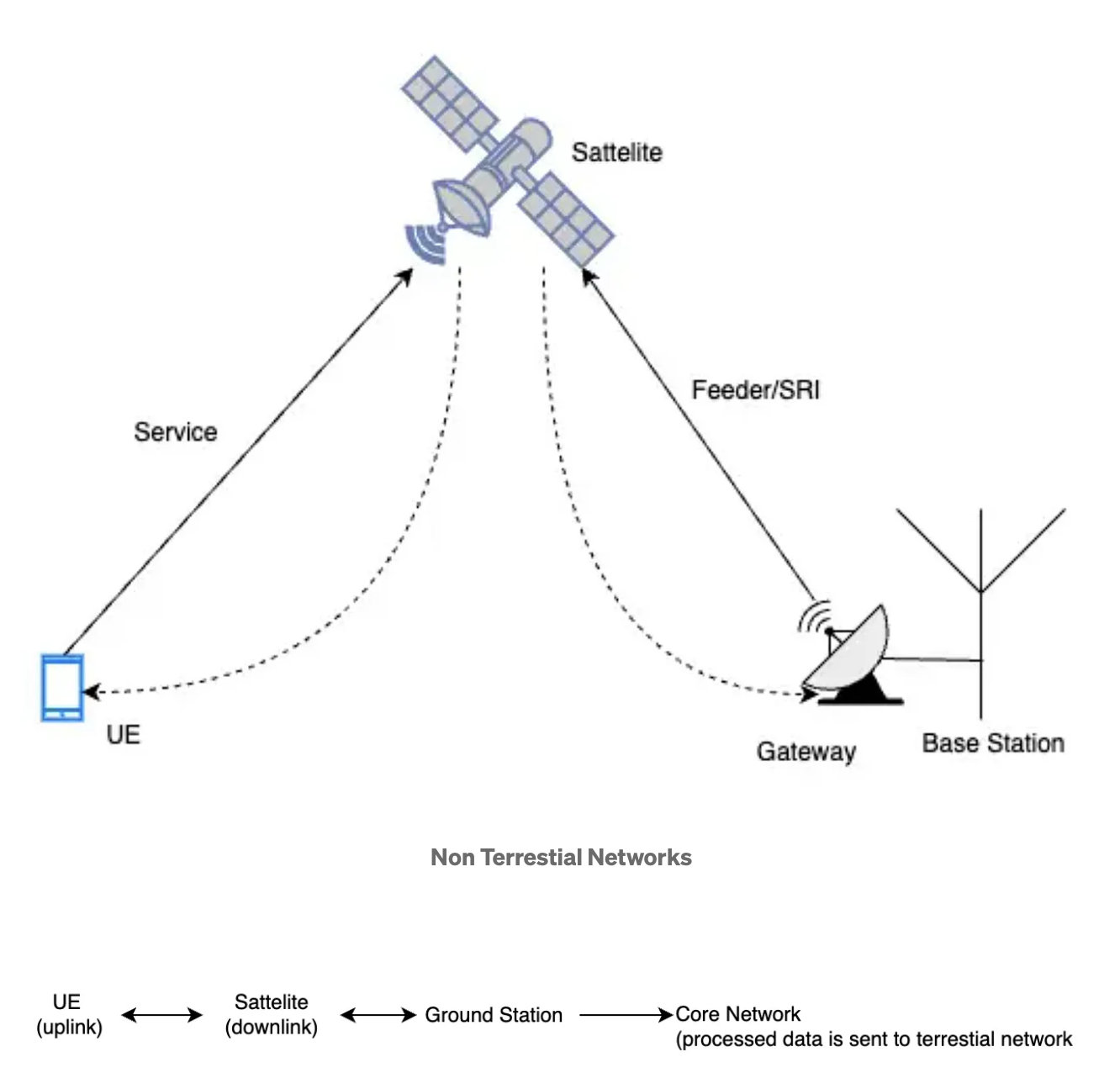Introduction to NTN¶
Author: Megha
Published: May 4, 2025
Part 1 of 2: OpenAirInterface (OAI) NTN Series
As 5G evolves, Non-Terrestrial Networks (NTN) are emerging as a key enabler for global, seamless connectivity — especially in regions beyond the reach of ground-based infrastructure. NTN brings the sky into the 5G equation, using satellite systems and high-altitude platforms to deliver coverage where traditional cell towers cannot reach.
These systems are crucial for:
Connecting remote or rural areas
Enabling communication in disaster zones
Supporting mobile connectivity in aviation, maritime, and defense scenarios
Types of Satellites in NTN¶
GEO (Geostationary Earth Orbit): Approximately 35,786 km above Earth, these satellites rotate in sync with the planet. They remain fixed in the sky relative to a location on the ground and offer continuous coverage to large regions but introduce high latency (~500 ms round-trip).
MEO (Medium Earth Orbit): Orbiting between ~8,000 km and 20,000 km, MEO satellites provide a compromise between coverage and latency. They are commonly used in systems like GPS.
LEO (Low Earth Orbit): Operating at ~500–2000 km altitude, LEO satellites offer low latency (~20–40 ms), making them ideal for real-time applications. Due to rapid movement across the sky, continuous coverage requires a large constellation (e.g., Starlink, OneWeb).
HAPS (High-Altitude Platform Systems): While not satellites, HAPS function in the stratosphere (~20 km) using platforms like balloons or drones to provide localized NTN coverage, valuable for disaster relief or targeted rural deployment.
Unlike terrestrial networks, NTN introduces a series of technical challenges:
Long signal propagation delays (particularly for distant satellites like GEO)
Doppler shifts caused by fast-moving satellites (notably in LEO)
Timing and synchronization issues arising from variable satellite movement and distance

Key Differences Between NTN and Terrestrial 5G¶
Propagation Delay: Terrestrial 5G exhibits ~1–5 ms delay, while NTN (especially with GEO) can exceed 400 ms.
Doppler Shift: Insignificant in terrestrial deployments; highly pronounced in LEO NTN due to orbital motion.
Mobility: Terrestrial networks manage handover between local cells, whereas NTN requires track beam management and satellite handover.
Infrastructure: Terrestrial 5G relies on ground towers and fiber; NTN depends on satellites, feeder links, and gateways.
Stability: Terrestrial links are typically stable; NTN links are subject to change from atmospheric conditions and satellite dynamics.